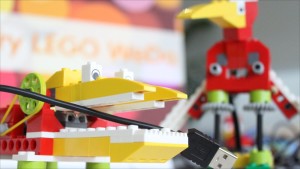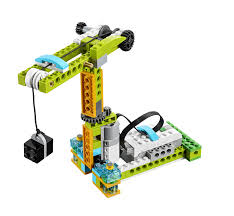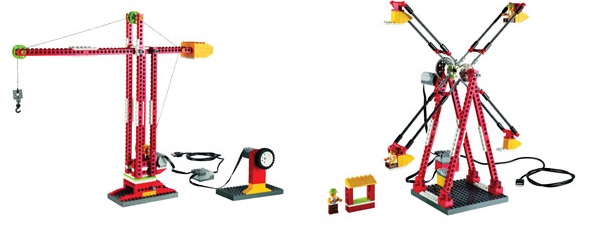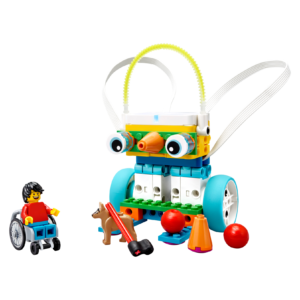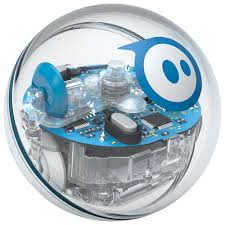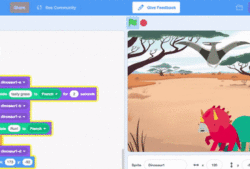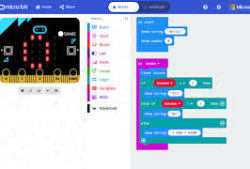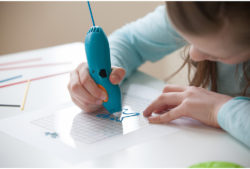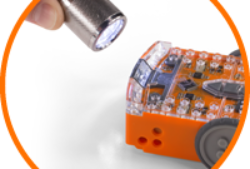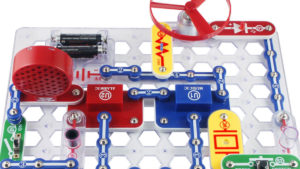Ages 4 to 8 years
Address: 695 Bishop Street North, Unit #4 – 2nd Floor, Cambridge, ON
[1.5-hours/Week – 12 Week Homeschool Program]
Our Robotics & Coding programs are designed for kids from ages 4 to 14. Students work independently on projects within the larger class group.
Children will experience fun learning in our classrooms, building robots using LEGO and other Educational kits, Coding Robots, Solving Problems, and critical thinking.
Ongoing Classes
Classes with no set start or end date, and students can join at any time, work at their own pace, and complete when they finish 12 weeks of class.
| Starting Dates: | ||
| Tuesday | Thursday | |
| Timings: | |
| 10:00 AM – 11:30 AM | 11:30 AM – 01:00 PM |
| Fees: | |
| $389.99 one-time or $129.99/month | 1.5 Hours/Week for 12 Weeks |
LOOKING FOR ALTERNATIVE DATES?
With a group of 6 or more, you can book your own homeschool program!
To inquire about alternative homeschool program dates, contact info@stemotics.com
Course |
Days | Register |
LEGO WeDoIntroductionLearn robotics with LEGO Education WeDo. Build snapping alligators, race cars, and spinning robots, then program them with the WeDo visual drag-and-drop programming software. In this kids robotics course, students are taught engineering basics with an emphasis on exploration and trial and error field-testing. Instead of simply “snapping bricks together,” students are encouraged to think critically about how and why their design needs to adapt to changing conditions. Our guided, personalized instruction allows younger kids to understand more complicated engineering techniques such as gear use, pulleys, and inclined planes. |
Tuesday / Thursday |
Course |
Days | Register |
WeDo 2.0 Advanced
IntroductionYour second, third or fourth graders can gain a deeper insight into science when you use WeDo 2.0 to create engaging, high-impact lessons. The hands-on tools encourage students to get involved in science exploration by asking questions, analyzing data and communicating their findings, while the curriculum pack covers real science practices linked to the Next Generation Science Standards, including gathering evidence, carrying out investigations and designing prototypes. The core set comes with a programmable Smarthub, motor, two sensors and 280 building elements, plus software, which include one Get Started Project, delivering an introductory experience to the resource. |
Tuesday / Thursday |
Course |
Days | Register |
Simple and Powered MachinesIntroductionThe purpose of this course is to present a short unit on simple and powered machines for use in elementary classes. Students will utilize simple machines that demonstrate force, friction, work and power. The experiments are hands-on activities that help students investigate and understand simple & powered machines. The principle and mechanics defining each machine will be reviewed. Each demonstration will be followed by an analysis of the variables, data collection techniques and questioning strategies to elicit appropriate and valid student-generated observations and conclusions. Application to real life situations will be tied in. |
Tuesday / Thursday |
Course |
Days | Register |
LEGO Spike Prime Essentials
IntroductionThe idea behind Spike Essentials is to teach through “meaningful play,” motivate students to become resilient and independent thinkers. This extension of the Lego Learning System is designed to help elementary school children (grades 1-5) spark an interest and understanding in STEAM subjects. There are five playful curriculum units in Spike Essentials that each include 7-8 lessons and 6-10 hours worth of learning material in each. LEGO® Education SPIKE™ Essential engages students in hands-on investigation of STEAM concepts using everyday themes. In addition to learning computer science and design engineering concepts, students will also develop their literacy, math, and social-emotional skills as they turn concepts into reality. |
Tuesday / Thursday |
Course |
Days | Register |
Sphero RobotsIntroductionThe Sphero is a robotic ball that can be controlled using your phone or tablet on Android or iOS. This course will teach the basics of controlling a Sphero and handling a Sphero using the official Sphero app. By learning the basics and more advanced functions of a Sphero, students will learn basic programming, math and physics in a fun and exciting way. Along with this students learn vital problem-solving skills that can be used in everyday life, as they work through obstacles given to them. The students will also learn how to communicate and work together to accomplish a goal, by working together to solve a challenging problem. By using the Sphero this course teaches all of these important concepts in an engaging and interesting way. |
Tuesday / Thursday |
Course |
Days | Register |
Scratch Coding and AnimationIntroductionLet your imagination run wild in this multimedia adventure. Create your own interactive stories, animated adventures, and games. Learn drag-and-drop programming with Scratch (a project of the MIT Media Lab). Computer characters are at your command! Take breaks with supervised outside play, sports, and techtivities. Programming may seem technical but it should also be a blast! Experience a workshop adventure where computer characters are at your command. This Scratch programming course for kids introduces our younger students to the essential building blocks of object-oriented programming through creating fun, interactive stories and simple games. Students let their imaginations run wild and learn programming basics with Scratch through interactive storytelling. Kids think creatively and learn how to program their own stories, games, and animations, as well as how to share their creations on the web. |
Tuesday / Thursday |
Course |
Days | Register |
Micro:BitIntroductionIntroductory classes are an excellent way to give your child an opportunity to discover Robotics without any long term commitment! Come and join us for 2 hours of building, coding and discovering how robotics can be a fun, lifetime skill! Micro:bit is a tiny computer designed for beginners in electronics and coding. The micro:bit is a pocket-sized computer intended for beginners. It can be coded with something simple in seconds – like lighting up its LEDs or displaying a pattern – with no prior knowledge of computing. Programming the micro:bit can be done by computer or by the app available for Android and iOS devices. Code is designed using a drag and drop interface in the Blocks editor. It also connects to other devices, sensors, kits and objects to have more complex learning. Each element is completely programmable via easy-to-use software on a dedicated website microbit.org, that can be accessed from a PC, tablet or mobile. Key features of the micro:bit
|
Tuesday / Thursday |
Course |
Days | Register |
3Doodlers 3D PrintingIntroductionA 3D pen is a pen that extrudes heated or warm plastic from the pen’s nozzle. You don’t need any software. There are no files to transfer, and no difficult tech to master. In the words of a teacher we work with, “whatever you imagine, you can draw. It goes from your brain, to your hand, right there.” With a 3D pen you can draw a raised graphic on a piece of paper or any flat surface. But what makes a 3D pen truly unique is its ability to “draw” in mid-air, allowing you to instantly form 3D structures right in front of you, which you can pick up and hold in your hand. |
Tuesday / Thursday |
Course |
Days | Register |
Edison
IntroductionOriginally designed for the classroom environment, Meet Edison also lends himself to becoming a fantastic educational toy that can also be used at home by a building brick enthusiast (Edison is compatible with LEGO® bricks) to build remote-controlled or programmed creations. Edison provides a small, user-friendly bundle specially designed for introducing beginners to the wide and amazing world of robotics. Edison provides a pathway, stepping the beginner through multiple stages from simple controlling, to programming and then to the building. Alkaline batteries are recommended for use with the Edison Robot. Edison is a robot capable of many different functions. Simply print out some barcodes and drive him across them to activate a range of pre-programmed features. Edison performs different functions based on the barcode he reads as he drives over it. Print out barcodes to turn Edison into a line tracker, remote control vehicle or even a sumo wrestler! |
Tuesday / Thursday |
Course |
Days | Register |
Snap Circuit Jr.IntroductionHave fun learning all about electronics with this kit that builds 300 exciting project! Award-winning Electronic Snap Circuits feature easy to identify colour coded parts that make building a snap! Elenco Electronic Snap Circuits contains over 60 parts and includes instructions for over 300 projects, including: an AM radio, a burglar alarm, an amplified musical bell, a fan, and much more. Enjoy hours of educational fun while learning about electronics! Elenco’s Snap Circuits® makes learning electronics easy and fun! Just follow the colorful pictures in our manual and build exciting projects such as FM radios, digital voice, recorders, AM radios, burglar alarms, doorbells, and much more! You can even play electronic games with your friends. All parts are mounted on plastic modules and snap together with ease. Enjoy hours of educational fun while learning about electronics. Snap Circuits® are endorsed by educators worldwide and used in schools, libraries, museums, STEM programs and creating with Snap Circuits®. The Circuit Safe™ patented safety device unique to Snap Circuits® branded products makes learning circuitry safe. |
Tuesday / Thursday |
Course |
Days | Register |
Makerspace Paper Circuit Jr.IntroductionKids will create electronic circuits using paper, foil and batteries. They will learn about current, resistance and voltage. Creating paper circuits is a good way to teach the basics of electricity and how circuits function. In addition to being educational, they can also be a fun makerspace project that helps to bring artwork and papercraft to life. By adding sensors, buzzers and motors to your circuit, you can also add another dimension of interactivity. These simple projects are great for all ages and all makerspaces. Using copper tape and surface-mount LEDs allows you to make a fully functional circuit on a flat surface, like a piece of paper. You can make light-up greeting cards, make origami animals come to life, or create a three-dimensional pop-up paper sculpture that has working lights in them. |
Tuesday / Thursday |

 Web Store
Web Store